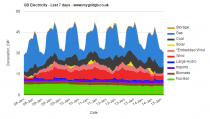In this blog, I look how demand fluctuates on a daily and weekly basis and the impact that that has on our carbon emissions. A simple conclusion can be drawn: reducing our electricity demand has a direct impact in reducing carbon emissions.
In this blog, I look how demand fluctuates on a daily and weekly basis and the impact that that has on our carbon emissions. A simple conclusion can be drawn: reducing our electricity demand has a direct impact in reducing carbon emissions.
It may be no surprise that we consume more electricity in the day than we do at night. This is when most businesses run and also when most of us are going about our lives.
The chart below shows our electricity generation over the week preceding this blog. In it, you see that we have an overnight load which is generally less than 35GW but a daytime load which can be anything from 30% to 65% higher.
Our patterns of activity are directly reflected in our electricity demand.
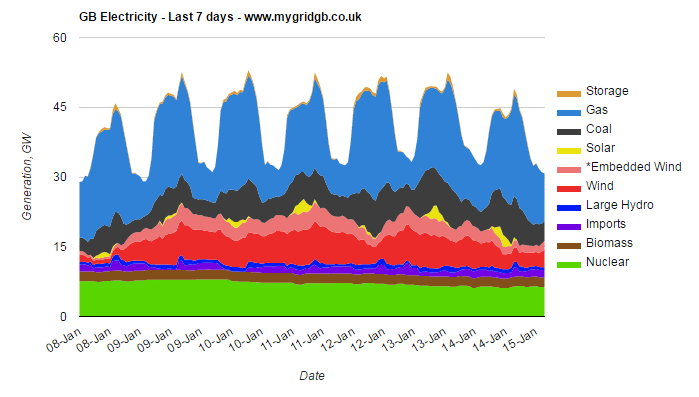
At present, that increase in demand is met using fossil fuels- namely gas. Gas consumption over the last week was 60% lower whilst we slept.
You can also see in the chart how storage used to help meet peak demand (the thin orange line at the top of the chart). That is mostly pumped storage at present but the energy storage mix is changing (something which I wrote my PhD on). More on that later in the blog.
I track impact that changing demand and generation has on carbon emissions in my data browser. The carbon emissions per unit of electricity are shown in the chart below.
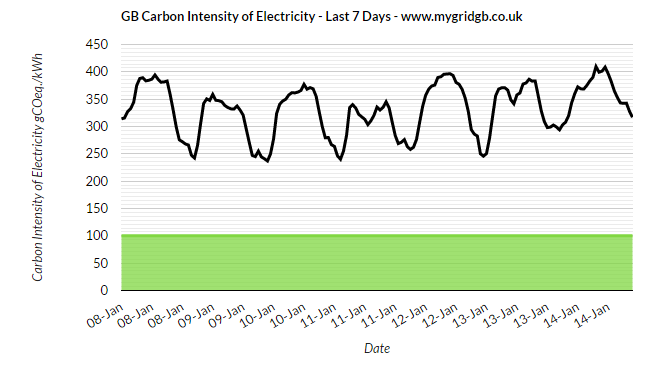
Our carbon emissions always drops at night. Over the last week, our carbon emissions were 10% lower between 6pm and 6am than they were during the day. Between midnight and 6am, carbon emissions were 20% lower.
If you look closely at the chart above you will notice how the evening peak in demand does not cause a spike in carbon intensity. That may at first seem surprising but then if we think back to earlier in the blog we saw that our peaks are met with energy storage.
Peak demand does not mean peak carbon. That is because of the energy storage on our electricity grid.
Like gas, storage can be turned on when we need it. The difficultly with storage is how to build more of it.
The big question of course is what we can learn from the last 7 days of electricity generation and consumption.
- Reducing demand means reduced carbon emissions. Energy saving is really important for driving down carbon. This comes through stricter standards for efficient appliances, LED lighting and simply switching things off.
- We remain wedded to gas to meet fluctuating demand. At present, there are insufficient flexible alternatives in the electricity system to meet our consumption
- A flexible electricity system which better matches demand to supply could help meet our peak demand whilst not causing spikes in greenhouse gas emissions.
To prove my point, the charts below shows generation and demand over the last 28 days. Look at how much reduced demand over Christmas had on carbon emissions.
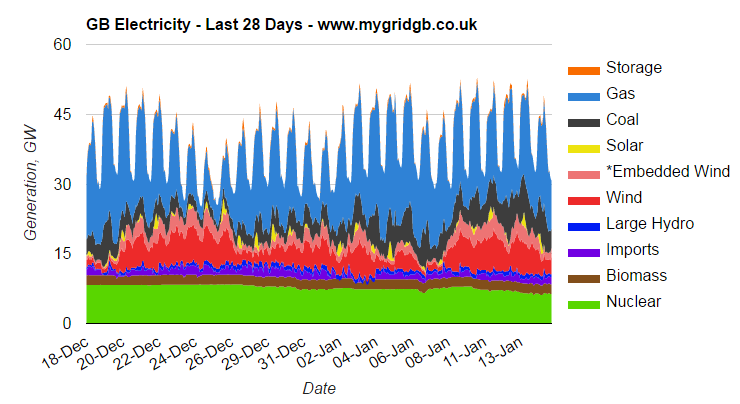
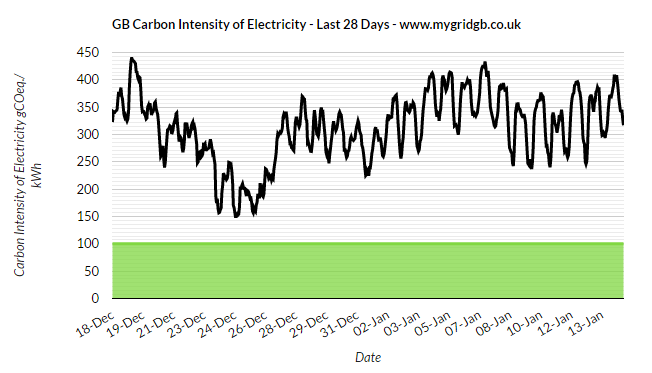
And if anyone from the Swansea Bay Tidal Power Station is reading this, I would love to talk to you and show what impact your plants could have on our electricity system in the future.

